Mercedes-Benz SLS AMG GT3: Live unveiling in Mexico
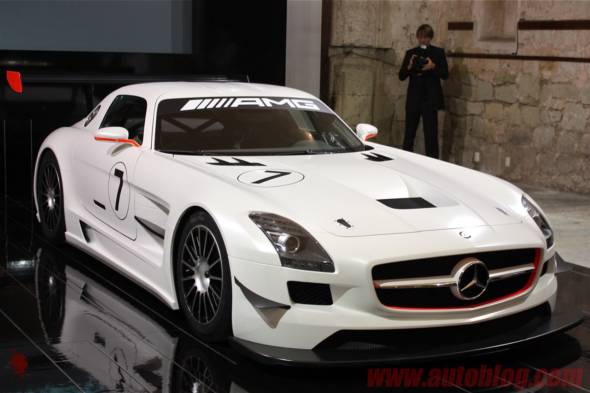
The New SLS AMG GT3
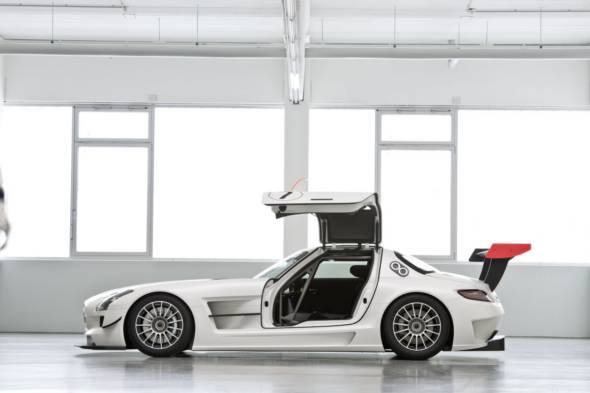
Thoroughbred motorsport technology for the race track
Montvale NJ Automobile fascination paired with spectacular race car design – that is the new Mercedes-Benz SLS AMG GT3. The racing version of the SLS AMG has been conceived as a customer sport vehicle for participation in race series based on FIA GT3 regulations. Meticulous lightweight construction and optimized chassis, brakes and aerodynamics deliver uncompromising dynamics. The extra special SLS AMG will make its race track debut in 2011.
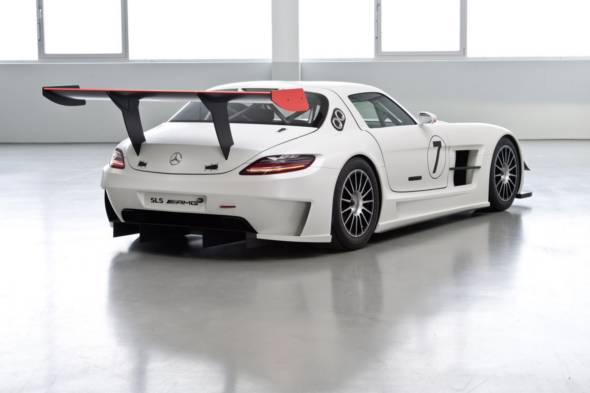
The clean design and breathtaking form of the SLS AMG have been effectively accentuated by targeted modifications to the bodyshell. The new components, made largely from lightweight carbon fiber offer a clear indication of extraordinary race track performance and extensive aerodynamic development work.

From the front, the GT3 race car boasts a new front skirt with enlarged air intakes. The wide opening beneath the characteristic radiator grille bearing the large Mercedes star and the wing-shaped horizontal fins supplies air to the engine oil cooler and brake discs. The same function is served by the two intakes below the vertical bi-xenon headlamps. Downforce on the front axle is provided courtesy of four externally mounted side flics, as well as a carbon front splitter; it runs directly into the smooth underbody panel, which connects to the rear diffuser.

The hood features a central opening for the extraction of heat from the engine, while side openings in the front fenders facilitate air flow through the wheel arches. Weight optimization measures include the application of extremely lightweight polycarbonate for the side and rear windows and, if desired, for the front windshield as well.
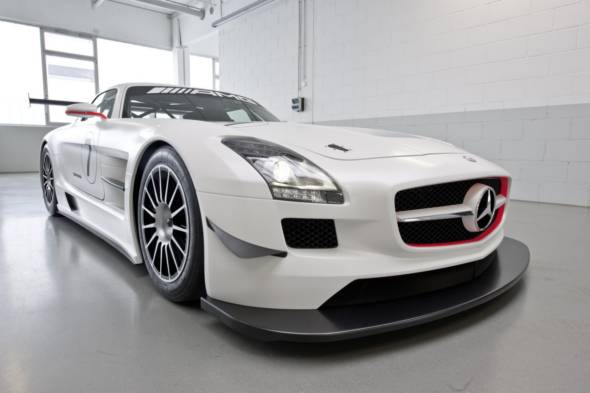
The fenders have been widened front and rear to accommodate the large racing tires. With a breadth of 78.3 inches, the GT3 bodyshell is a good 2 inches wider than the series production SLS AMG. The new sills feature openings for cooling the rear brakes, with the smooth underbody visible along the underside of the sills. The B-pillar houses the standardized fuel tank adapter for the rapid refueling system. The 31.7 gallon fuel tank is located centrally behind the driver.
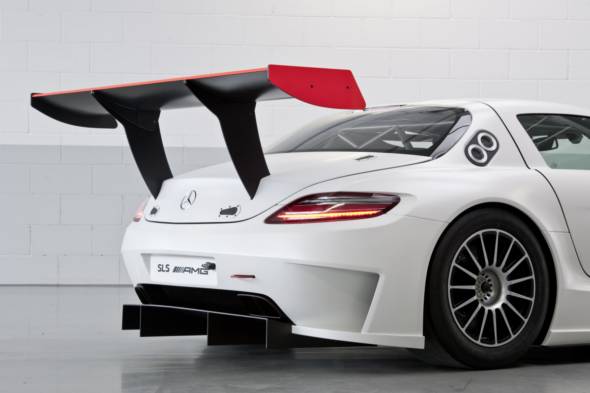
Wide rear carbon spoiler
The rear view of the SLS AMG GT3 is dominated by its imposing width. Above the rear hatch sits a wide carbon fiber spoiler; it is extensively adjustable and facilitates perfect setup to suit individual race track characteristics. The new rear skirt accommodates two openings for extracting air from the rear wheel arches. A further visual highlight is the rear carbon fiber diffuser; it rises smoothly from the rear axle area as a continuation of the smooth underbody, its form adding to the downforce. The overall aerodynamic concept of the SLS AMG GT3 was analyzed and defined through extensive wind tunnel and race track testing.
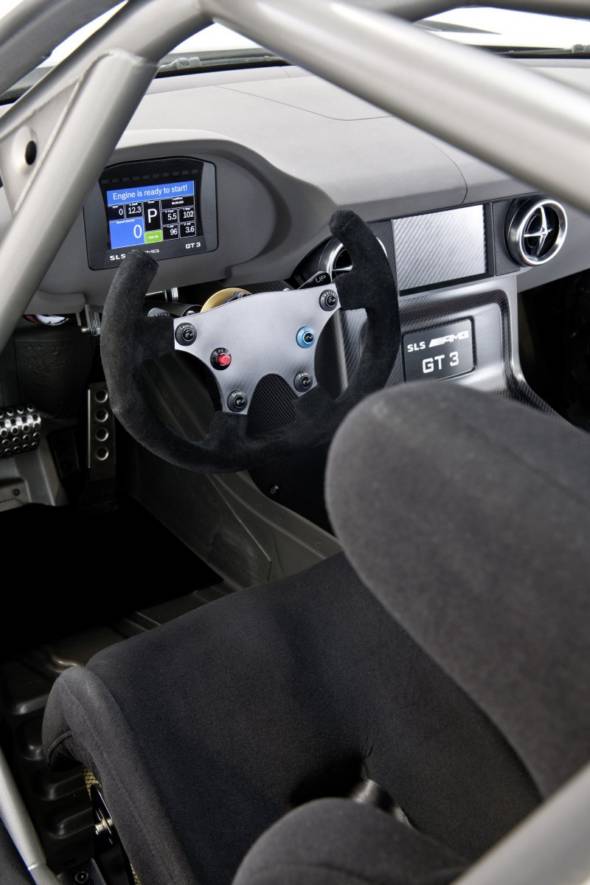
The black exhaust end pipes deliver a fascinating and, at the same time, characteristic AMG eight-cylinder sound. The regulation rain lamp is integrated into the rear hatch – it must be switched on by the driver in poor weather conditions.
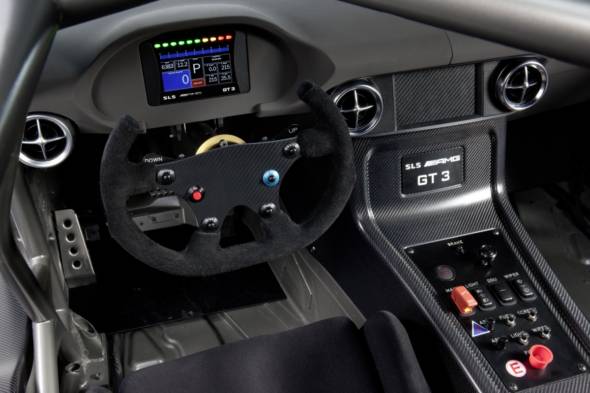
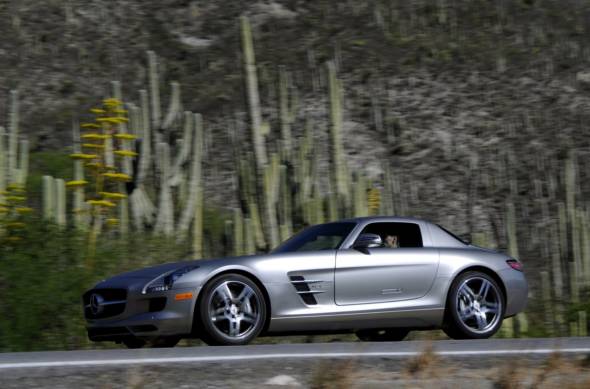
Close to series production AMG 6.3 liter V8 engine
As defined in the FIA GT3 regulations, the AMG 6.3 liter V8 engine is virtually identical to that of the series production vehicle. Thanks to its low weight, the acceleration figures for the GT3 – 3.7 seconds for the sprint from 0 to 60 mph – are considerably below the already excellent figures for the series production vehicle. Depending on gear ratio, the top speed is more than 186 mph.
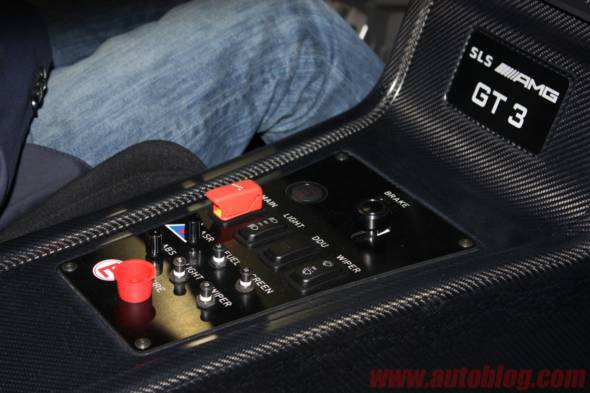
The AMG 6.3 liter V8 engine uses dry sump lubrication in the racing vehicle, too. The application of a suction and pressure pump, as well as an external oil tank means that the conventional oil sump can be omitted. This technology ensures reliable lubrication of the engine under high lateral acceleration, of the kind usually experienced on the race track.
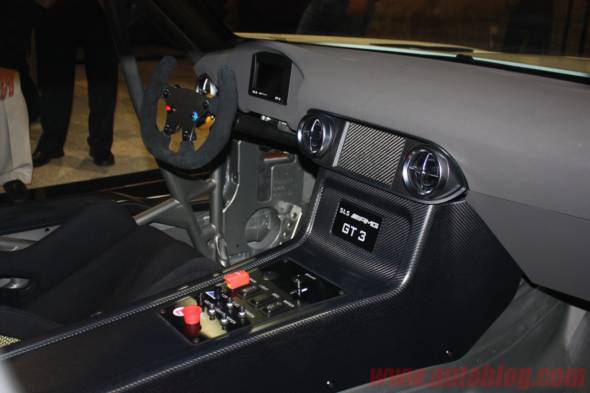
Dry sump lubrication also facilitates a low mounting position for the V8 power unit – one of the key technological highlights of the SLS AMG. The solution – installing the eight-cylinder as low as possible and as a front mid engine behind the front axle, combined with a transaxle transmission layout – results in excellent weight distribution.
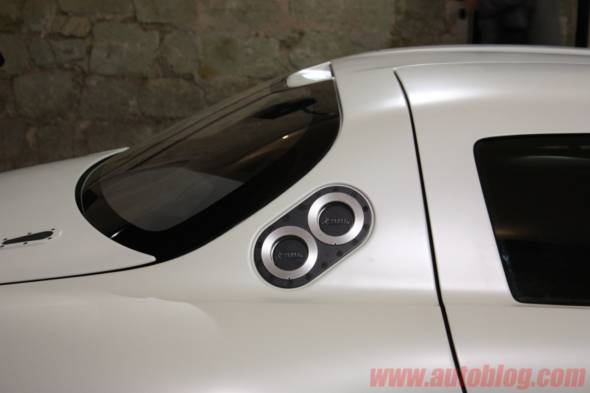
Six-speed racing transmission with sequential shift
In contrast to the series production vehicle, the SLS AMG GT3 is equipped with a six-speed racing transmission with sequential shift. Thanks to its compact construction, the race-tested transmission offers considerable packaging benefits – ultimately, the GT3 version has less ground clearance than the series production vehicle.

The driver shifts gear using two shift paddles on the steering wheel. The transmission is mounted directly on the rear axle and connected to the V8 engine via a torque tube, which has a very high degree of flexural and torsional stiffness. This delivers considerable benefits when it comes to dynamics, as this sophisticated solution enables the entire driveline to be laid out with significantly less play.

Alongside the traction control, a multi-plate locking differential integrated into the transmission delivers outstanding acceleration characteristics. Inside the torque tube, a drive shaft rotates at engine speed. As in the series production model, and in the Mercedes-Benz C-Class DTM touring car, the shaft is made from carbon fiber.
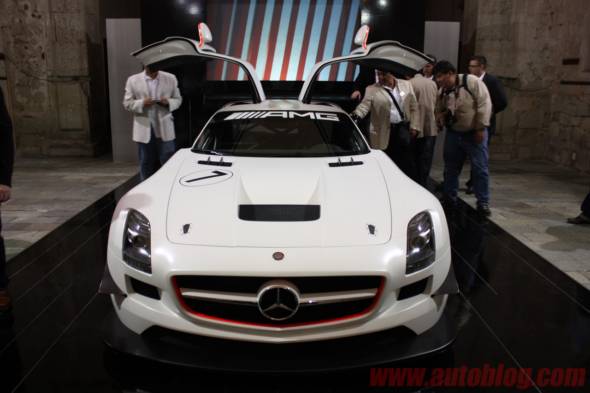
With its long wheelbase, low center of gravity and wide track, the SLS AMG vehicle concept was predestined for the race track – its strengths include precise turn-in characteristics, first-class agility, low inertia under sudden changes of direction and a high cornering limit.
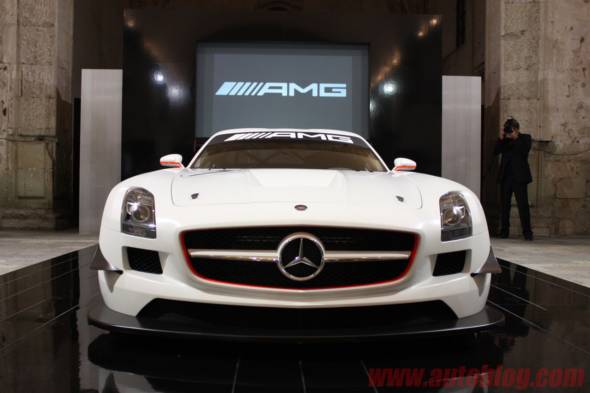
It required only minimal modification for perfect race track performance. The lightweight aluminum chassis with double wishbone suspension at all four corners has modified kinematics to take into account the lower vehicle height. The array of adjustability options facilitates optimal modification to suit individual race track characteristics and varying weather conditions. As well as the ability to vary the spring and damper setup, there is also the freedom to adjust track and camber, vehicle height and the stabilizers on the front and rear axles.
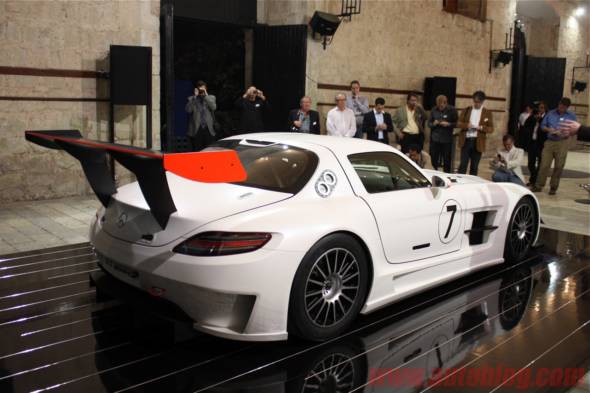
Like the series production SLS AMG, the GT3 version is also equipped with rack and pinion steering with speed-dependent power assistance. The more direct input ratio facilitates even greater handling agility on the race track.
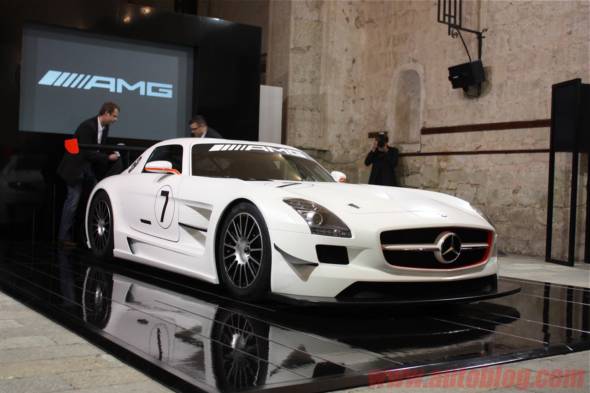
AMG race braking system using composite technology
Shortest stopping distances, highest stability and optimal control are guaranteed by the AMG race braking system. All four corners feature brake discs in motorsport-tested composite technology. Gray cast iron axial and radial floating discs are fixed to an aluminum hat via stainless steel composite elements.

This sophisticated technology enables perfect heat dissipation and thus reliable stability. The SLS AMG GT3 is also equipped with precisely calculated cooling channels – openings in the front skirt and ahead of the rear wheels direct cool airflow over the brake discs. All four brake discs are ventilated, slotted and drilled. Six-pot fixed calipers on the front axle and four-pot fixed calipers at the rear, finished in anthracite with the AMG logo in white, provide plenty of brake pad surface. An anti-lock brake system with special race track settings is fitted as standard.

Due to space restrictions, the AMG high-performance ceramic composite brake system, available as an option on the series production vehicle, is not compatible with the 18-inch wheels prescribed by FIA regulations.

The AMG center-locking alloy wheels – 12×18 inches front and 13×18 inches rear – are fitted with racing tires in formats 11.3 x 26.9 inches (front) and 12.4 x 27.9 inches (rear). Depending on the application, the tires are available as profile-free slicks, intermediates or wet weather tires. The classic multi-spoke design aids ventilation of the braking system. Fast pit stops and wheels changes are ensured by the pneumatic lift system integrated into the underbody. Four pneumatic rams raise the GT3 race car by around 7.5 inches, enabling the pit crew to change the racing tires in double quick time.
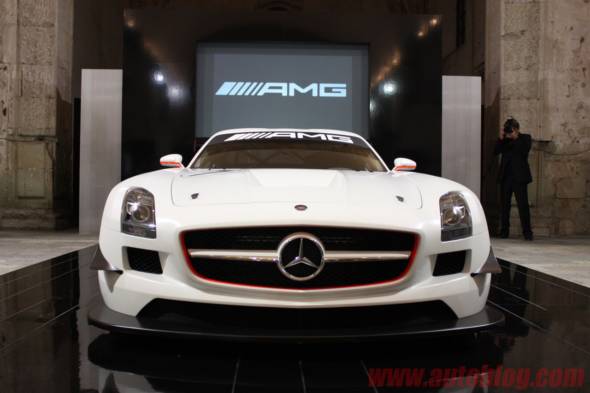
Interior with racing bucket seat and race steering wheel
On opening the gullwing doors, the SLS AMG GT3 displays a functional interior with a distinctly race car feel. The driver sits in a racing bucket seat fitted with a six-point harness and the HANS system (Head andNeck Support) that fixes the helmet in place in the event of an accident, thus minimizing the risk of injury. Additional safety comes courtesy of the steel roll cage, which also serves to further stiffen the aluminum spaceframe.

A steering wheel with a diameter of 13 inches facilitates perfect vehicle control. Because it is open at the top, the driver always has a perfect view of the central display, which provides all relevant information such as road speed, engine speed, operating temperatures, lap times and gear selection. The steering wheel is fitted with a quick-release mechanism that makes entering and exiting the vehicle considerably easier. The switches on the steering wheel hub enable the driver to activate additional functions such as the pit radio, headlamp flasher and the drink supply. Further operating elements are mounted on the center console and include the start/stop function for the AMG V8 engine, the traction control, reverse gear and – just in case – the integrated fire extinguisher. The control for adjusting brake balance is located on the torque tube tunnel.
The close relationship between the GT3 and its series production sibling is demonstrated by the instrument cluster, with its powerfully taut wing profile providing visual breadth. Integrated into the dash are the highly distinctive air vents galvanized in “Silver Shadow” and with adjustable cross-shaped nozzles – their form evocative of a jet engine.

Deliveries of customer vehicles to start early 2011
The new SLS AMG GT3 has been developed in accordance with FIA GT3 regulations and is entitled to participate in all GT3 race series – including the popular 24-hour races in Spa-Francorchamps, Belgium, and on the Nürburgring in Germany. Interested customers can order the vehicle starting in autumn 2010, with delivery scheduled prior to the start of the 2011 racing season. Homologation will be completed in March 2011.
AMG has been producing racing versions of Mercedes-Benz cars and high performance street machines for over four decades.That tradition continues with the unveiling today in Mexico of a GT3 spec version of the new SLS gullwing coupe. Sales will start this fall and AMG hopes to have the homologation process completed in time for the 2011 race season.

The GT3 SLS will use the same 6.3-liter V8 as the road car, but the FIA will determine its final output for racing. The aerodynamic enhancements are the big news here, with changes to the bodywork evident all over. The front end features a deep carbon fiber splitter that’s only bested by the large rear wing out back.

The hood sports a large cooling event and there are air intakes for brake cooling in the side skirts and cooling vents in the fenders behind the front wheels as well. Other race-spec features include a smooth underbody, rear diffuser, central-locking wheels and fuel filler pipes in the C-pillar.

Given the racing heritage of the original SL from the 1950s, seeing a gullwing back racing on the track will be the best kind of déjà vu for fans of the three-pointed star. Follow the jump for the official press release from AMG and Mercedes-Benz that includes a few more specifics.
Source: Autoblog
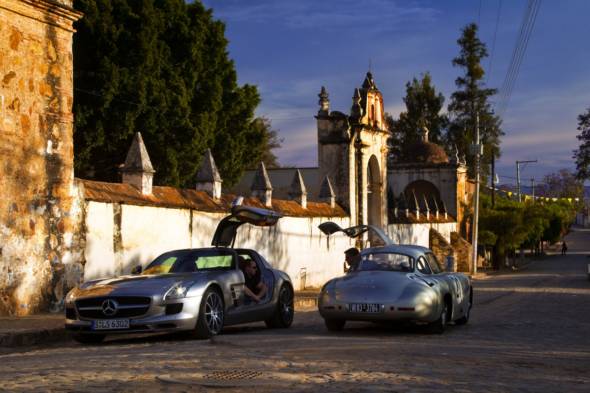
Spectacular racing car for the sporting customer
New York – Coinciding with the market launch of the SLS AMG on 27 March 2010, Mercedes-AMG is presenting a GT3 variant. This racing version of the gullwing model stands out with its spectacular design and thoroughbred motor sports technology. Developed to comply with the GT3 specifications of the FIA (Fédération Internationale de l’Automobile), the SLS AMG GT3 is designed as a racing sports car for customers competing in sprints and long-distance races. These race series for near-series GT cars are noted for their very varied participants and great excitement. Not least because of their comparatively favourable cost structure, they are enjoying increasing worldwide popularity.
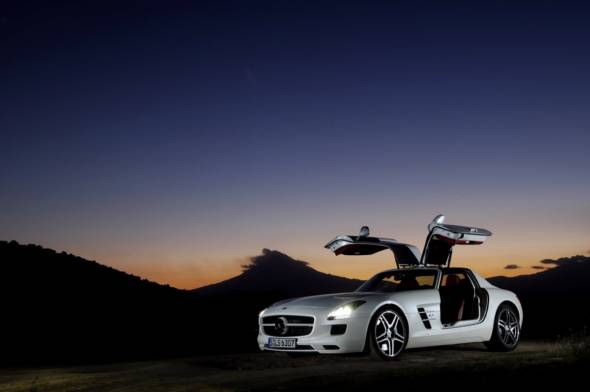
AMG, the performance brand within Mercedes-Benz, is entering a new business sector with the new SLS AMG GT3: the development, production and marketing of sports racing cars intended for customer use. Sales of these customer cars are expected to commence in autumn 2010, and homologation of the GT3 variant will be completed in time for the 2011 racing season.
“Thanks to uncompromising lightweight construction and superior handling dynamics, the SLS AMG provides an outstanding basis for a highly competitive racing car. This exciting GT3 version is our response to strong customer demand for a car designed for these attractive motor sports series. Once again, it demonstrates AMG’s huge experience gained in more than 40 years of motor sports, and its great expertise in the development of unique high-performance cars,” says Volker Mornhinweg, Chairman of Mercedes-AMG GmbH.
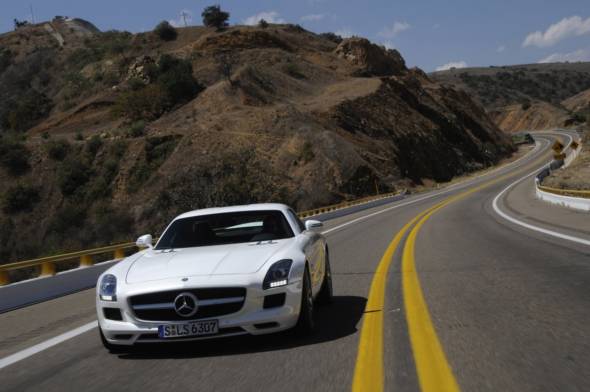
The new SLS AMG GT3 is an emphatic continuation of AMG’s commitment to motor sports. AMG has been a pioneer in the motor sports world ever since its foundation in 1967. The new racing version of the Mercedes-Benz SLS AMG is developed and produced by AMG in close cooperation with HWA AG. HWA is responsible for the DTM racing team on behalf of Mercedes-Benz Motorsports. The HWA team is one of the most successful in international motor sports, as witness nine driver championships in the DTM and ITC, as well as two championship titles in the FIA GT Championships.
The SLS AMG GT3 is set to write another chapter in this success story, and harks back to the 300 SL racing sports car of 1952 which first established the “gullwing” legend. Its historic victory in the “Carrera Panamericana” long-distance race also made Mercedes-Benz a household name in North and Central America, and demonstrated the know-how and expertise of the Stuttgart-based automobile company.
Mercedes-Benz SLS AMG GT3
Spectacular racing car looks and top-class performance
The purist design and breathtaking contours of this gullwing model are effectively emphasised by specific modifications to the bodywork. The new components made mainly from carbon-fibre are an unmistakable testimony to the outstanding racetrack performance and extensive aerodynamic development work.
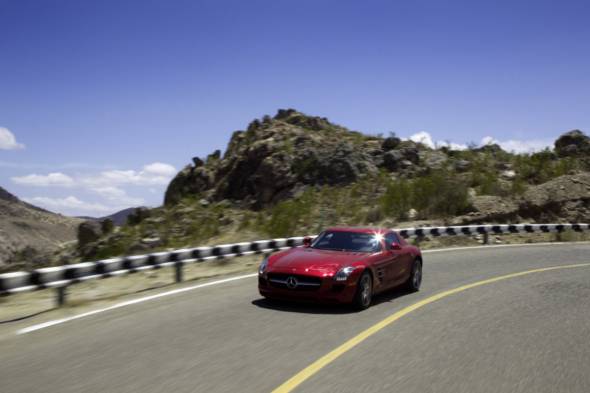
At the front the GT3 racing car has a new front apron with larger air intakes: the wide aperture below the characteristic radiator grille with a large Mercedes star and a wing-shaped transverse fin supplies the engine oil cooler and brake discs with cooling air. The two air intakes below the vertically arranged bi-xenon headlamps have the same function. Downforce at the front axle is provided by four externally mounted “flics” and the carbon-fibre front splitter: this blends into the smooth underbody cladding which ends with the rear diffuser.
The bonnet has a central aperture to dissipate the engine heat. The hot air is vented in the wheel arches from side vents in the front wings. Particularly lightweight polycarbonate is used to glaze the side and rear windows, and this is also available for the windscreen.
The front and rear wings have been widened to make space for the large racing tyres. With a width of 1990 millimetres, the body of the GT3 is a good 50 millimetres wider than that of the standard SLS AMG. The new side skirts have apertures for cooling the rear brakes. The smooth underbody is visible at the lower edges of the side skirts. The standardised filler pipe for the fast-refuel system is accommodated in the B-pillar. The 120-litre fuel tank is centrally located behind the driver.
Wide rear apron of carbon-fibre
Viewed from the rear, the SLS AMG GT3 impresses with its sheer width. The boot lid is surmounted by a wide carbon-fibre rear aerofoil, which has multiple adjustments and allows a perfect setup for the type of racetrack concerned. The new rear apron features two apertures designed to vent the rear wheel arches. The carbon-fibre rear diffuser is another eye-catching feature: as an extension to the smooth underbody, it gradually rises in the rear axle area and generates a downforce thanks to its shape. The overall aerodynamic concept of the SLS AMG GT3 was refined and finalised in extensive wind tunnel and racetrack tests.
The black exhaust tailpipes emit a thrilling and very characteristic AMG eight-cylinder sound. The rain light prescribed by the rulebook is integrated into the boot lid – it must remain permanently switched on if the weather conditions are poor.
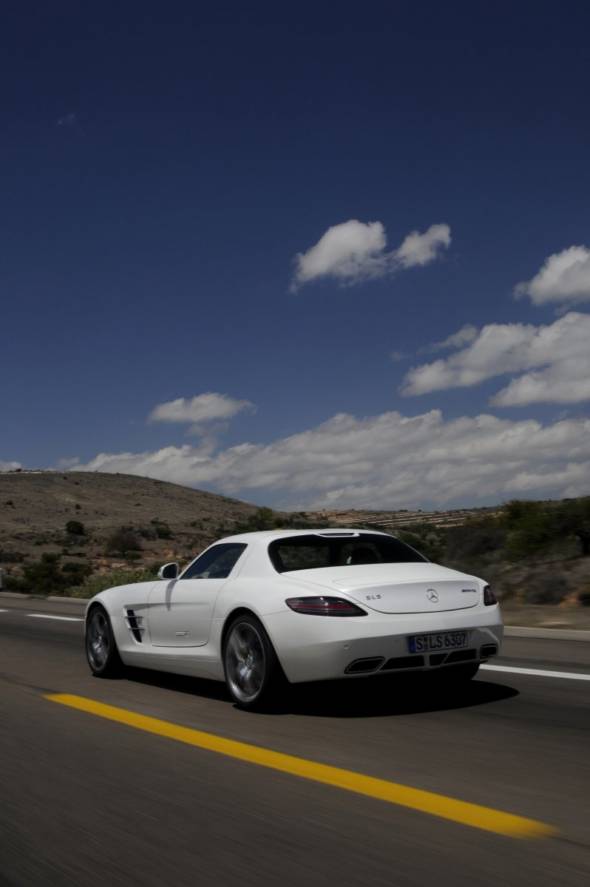
Near-series AMG 6.3-litre V8 engine
As prescribed by the FIA GT3 rules, the AMG 6.3-litre V8 engine is practically identical to that in the standard model. Thanks to its lower weight, the GT3 will easily better the already outstanding acceleration of the standard model – 3.8 seconds from zero to 100 km/h; depending on the final drive ratio, the top speed will exceed 300 km/h.
The AMG 6.3-litre V8 engine also has a dry sump lubrication system in the racing model. Using vacuum and pressure pumps, as well as an external oil tank, makes it possible to dispense with a conventional sump. This technology ensures reliable engine lubrication even under the high lateral acceleration forces encountered on the racetrack.
Dry sump lubrication also allows a low installed position for the V8 engine – one of the key technological highlights of the SLS AMG. Installing the eight-cylinder engine in the lowest possible position behind the front axle as a front-mid engine, and combining it with the transmission in a transaxle arrangement, produces a very favourable weight distribution.
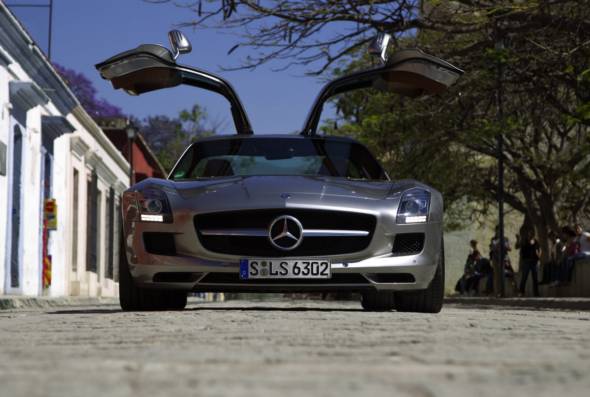
Six-speed racing transmission with sequential gear-changes
Unlike in the standard model, power in the SLS AMG GT3 is transferred by a six-speed racing transmission with sequential gear-changes. Thanks to its compact construction, this race-tested transmission has advantages in terms of packaging – after all, the GT3 version has a smaller ground clearance than the standard model. The driver shifts the gears using two shift paddles on the steering wheel. The transmission is mounted directly on the rear axle, and connected to the V8 engine via a flexurally and torsionally rigid torque tube.
This has decisive advantages with respect to handling dynamics, as this sophisticated solution enables the entire powertrain to be configured with far less free play. In conjunction with the traction control system, a multi-disc locking differential integrated into the transmission ensures outstanding acceleration. A drive shaft rotates at the engine speed within this torque tube. As in the standard model, and also the Mercedes-Benz C-Class DTM racing cars, the shaft is made from carbon-fibre.
The vehicle concept of the SLS AMG is predestined for top-class racetrack performance, with a long wheelbase, a low centre of gravity and a wide track. Its strengths include precise over/understeer characteristics, first-class agility, low inertia during fast changes of direction and high physical limits when cornering.
Very few modifications were required for perfect racetrack performance: the lowered, lightweight aluminium suspension with double wishbones all-round has the ideal kinematics. Multiple adjustments allow the best possible adaptation to the relevant racetrack characteristics and prevailing weather conditions. Not only the spring and damper setups, but also the track width and camber, the suspension height and the stabilisers at the front and rear axles can be adjusted.
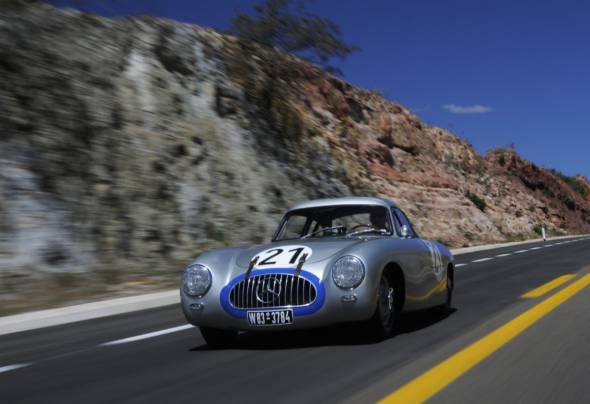
The rack-and-pinion steering system with speed-sensitive servo assistance is basically the same as in the standard SLS AMG. The more direct steering ratio makes for even more agile handling on the racetrack.
AMG motor sports braking system with composite technology
The AMG motor sports braking system ensures extremely short braking distances, outstanding fade-resistance and great sensitivity: race-tested composite technology is used for all the brake discs. In this system, the grey cast-iron discs are mounted on an aluminium bowl via stainless steel connections in a radially and axially floating arrangement. This sophisticated technology allows perfect heat conduction, and therefore reliable fade-resistance.
The SLS AMG GT3 also features precisely configured cooling ducts: apertures in the front apron and in front of the rear wheels supply the brake discs with cool air when on the move. All four brake discs are ventilated, grooved and perforated. Six-piston fixed calipers at the front and four-piston fixed calipers at the rear in anthracite with a white AMG logo allow generous brake lining surfaces. An anti-lock braking system with a special racing configuration is standard. For space reasons, the AMG high-performance ceramic composite braking system optionally available for the standard model is not compatible with the 18-inch wheels prescribed by the FIA rulebook.
The size 12 x 18-inch (front) and 13 x 18-inch (rear) AMG light-alloy wheels with central locking are shod with racing tyres in size 287 x 682 mm (front) and 315 x 708 mm (rear). Depending on the conditions, untreaded slicks, intermediates or rain tyres are used. The classic multi-spoke design assists ventilation of the braking system.
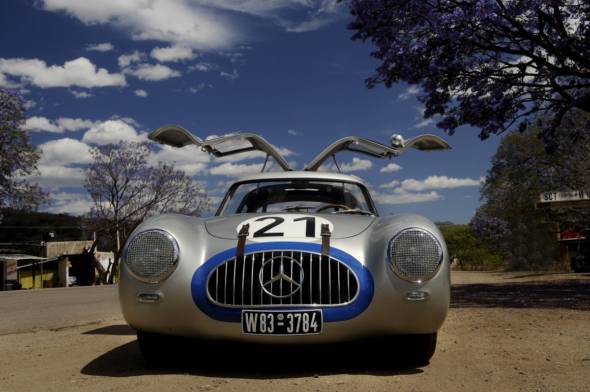
Rapid pitstops and wheel-changes are assured by the pneumatic jacking system integrated into the underbody: four pneumatic jacks lift the GT3 racing car by around 190 millimetres to allow very rapid wheel-changes by the pit crew.
Interior with racing bucket seat and racing steering wheel
Opening the gullwing doors of the SLS AMG GT3 reveals a functional interior with a racing car atmosphere. The driver is seated in a racing bucket seat, his safety assured by a six-point seat belt and the HANS system (Head and Neck Support), which fixes his helmet in a defined position during an accident to minimise the risk of injury. Additional safety is provided by the steel rollover cage, which also serves to reinforce the aluminium spaceframe.

A racing steering wheel with a diameter of 330 millimetres allows perfect vehicle control. Thanks to the open upper section of the rim, the driver always has a clear view of the central display. This keeps him informed about all the relevant parameters such as speed, engine rpm, operating temperatures, lap times and the selected gear.
The steering wheel also has a quick-locking feature which allows much easier access and egress. Switches on the steering wheel boss enable the driver to activate additional functions such as the radio link to the pits, headlamp flasher or the drink function. Further controls are mounted on the centre console, for example the start/stop function for the AMG V8 engine, the traction control system, reverse gear and – if the worst should happen – the integrated fire extinguisher system. The brake balance adjustment control is mounted on the tunnel of the torque tube.
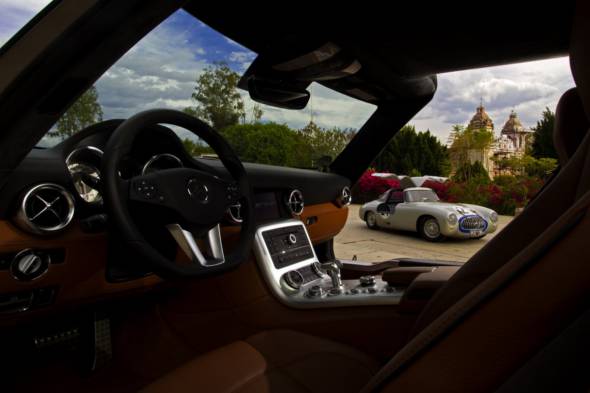
The near-series specification of the GT3 version is reflected in the dashboard, whose powerfully arching wing section gives an impression of width. Strikingly integrated into the dashboard, the air vents galvanised in “Silver Shadow” have adjustable, cruciform nozzles reminiscent of an aircraft’s jet engines.
Deliveries of customer vehicles will commence in spring 2011
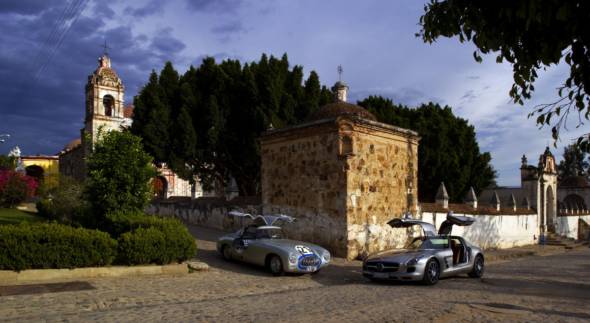
The new SLS AMG GT3 was developed to comply with the international FIA GT3 race rules, and is entitled to take part in all GT3 race series – which of course includes the popular 24-hour race in Spa-Francorchamps (Belgium) or the Nürburg-ring. Interested customers are able to order the GT3 from autumn 2010, and delivery will take place in time for the start of the 2011 racing season. Homologation will be completed in March 2011.
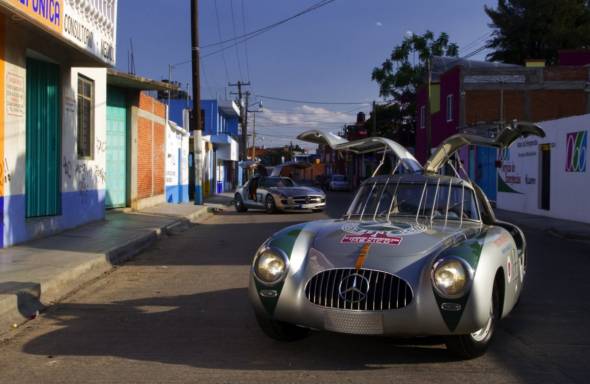
New legend with unrivalled performance – the gullwing super sports car from Mercedes-Benz and AMG

















Direct steering, differential lock and 3-stage ESP®




The SLS AMG as a masterpiece in AMG’s more than 40-year history









